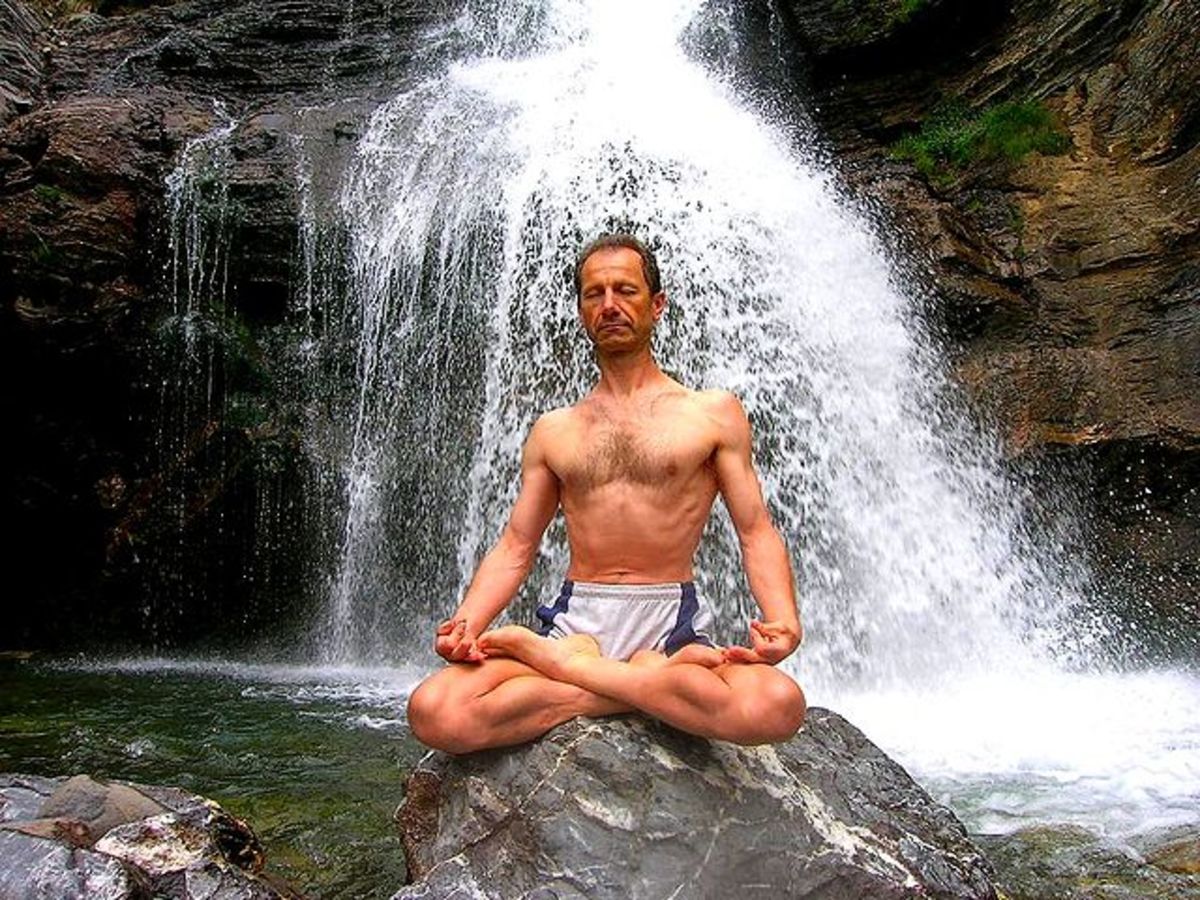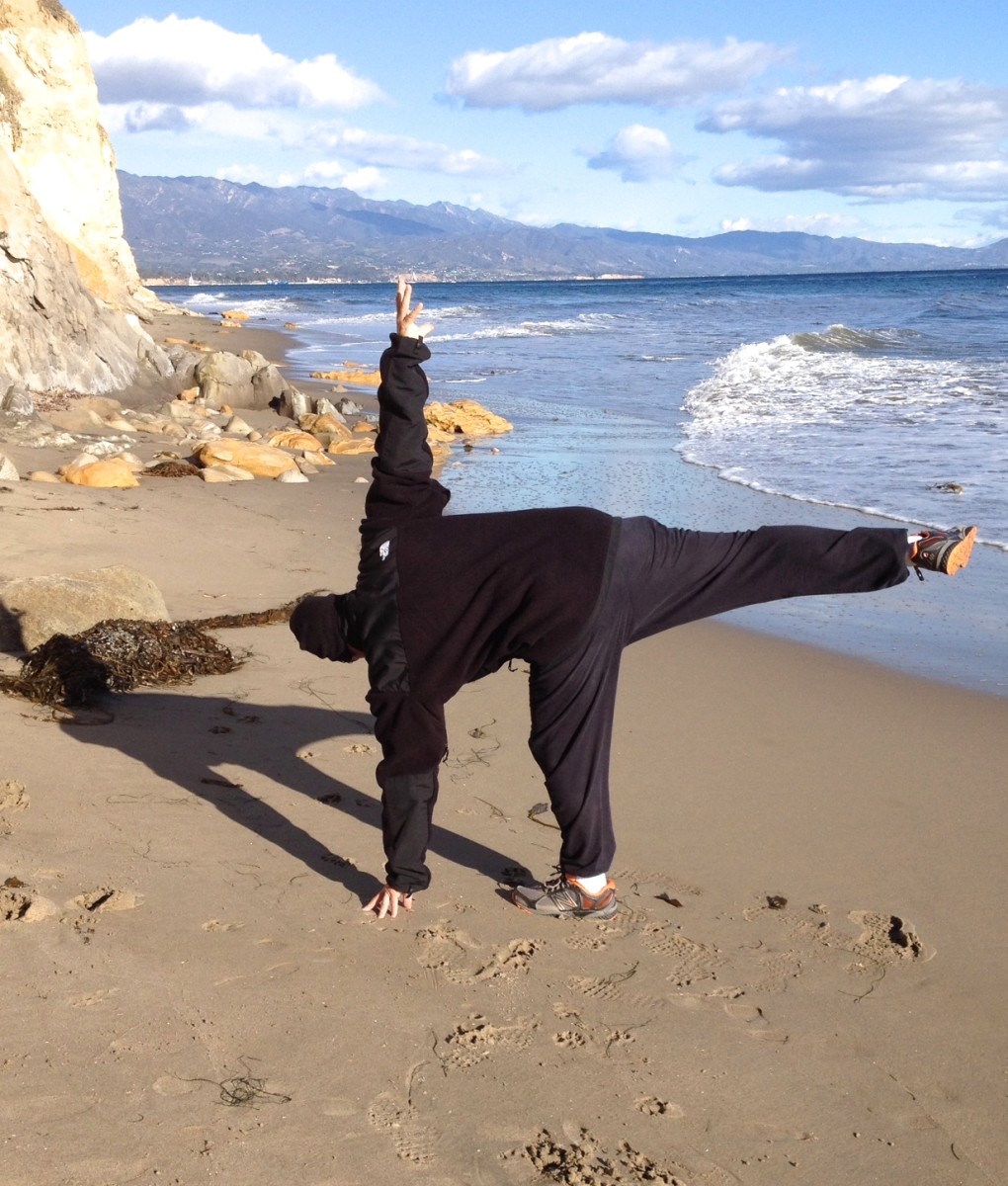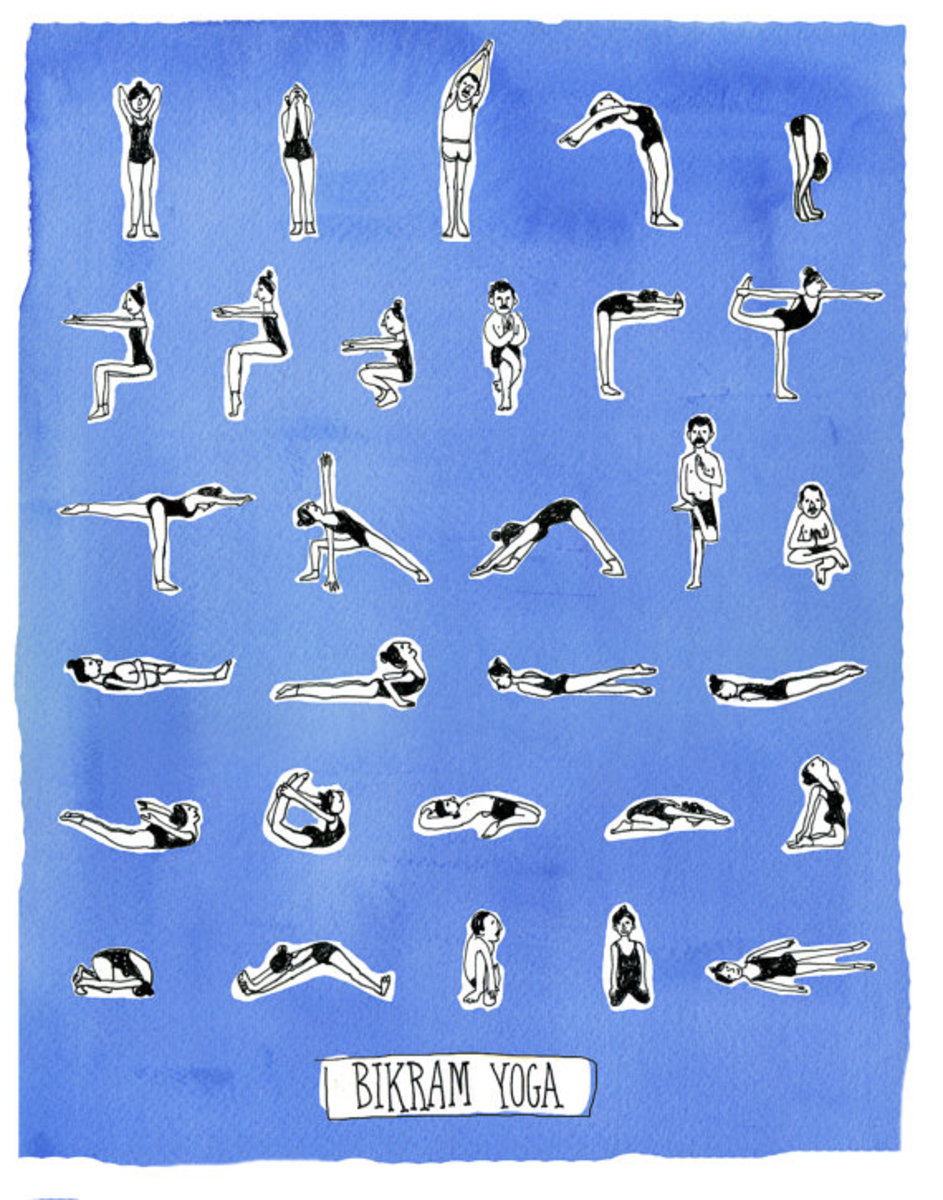The Eight Limbs of Yoga

There's more to yoga than assuming various positions, evem of just at the request of the police
There are eight branches or "limbs" of yoga as described from sources dating to the time of Patanjali. Although Patanjali wrote down the aphorisms dealing with some aspects of yoga between 200 and 400 C.E., the postures were never described by him. Prior to this, everything was in oral tradition. This was the case for various postures until the 19th century when yogis started to writer them down. Yoga posture therefore is still an evolving science and new ideas are being added even today. Those who followed to the present era agree on the description of the eight limbs of yoga. This has been succinctly described by B. J. Colwell as follows:
"There are eight different kinds of yoga and really we are practising them all of the time. Hatha Yoga, which is simply, physical yoga, is the one most people revert to when talking about yoga (there are several styles of hatha yoga, Ashtanga, power yoga, kundilini yoga, are some avid examples). All are good there is no bad. Bikram's idea was to make it simple for beginners and to make it the most effective for our western society. So he took 26 (poses) and gave them all his own twist and then tested them for 5 years in Tokyo university to make sure they would do exactly as proclaimed, 100 percent exercise in the precise order and time."
The other 7 styles of yoga are:
Karma yoga - work or action (this is the most important one)
Raja yoga - Mental
Vedanta Yoga - philosophical
Bhakti Yoga- devotional
Mantra yoga - Mantra chanting
Laya Yoga - Esoteric
Jnana Yoga - Wisdom"
Simply put, the most exact translation of yoga to English is yoking. That is to say that we become united to what we are doing. Yoking in this case can be compared to the connecting of the spirit to the physical body. We shall now look at each one. Hatha yoga is the one where you take different positions to increase flexibility, strength and health. Within that context, there are variations in poses and the execution of the same. The import of this work is to delve into the other branches, particularly the spiritual side, but not at the exclusion of the other, so the Hatha yoga for all its importance is detailed later.

Karma Yoga
Karma Yoga is the most important, dealing with our action (one of the three gunas) and how this affects everything in a simple cause-effect relationship. Simply put, Karma yoga tells us that for every action there is an equal and opposite reaction. This is the way that brings balance/rhythm/justice as detailed in one of the other gunas. Karma Yoga tells us that it is vitally important for our own well being and spiritual advancement, to behave in a non-harmful way, with respect for all other beings and the planet. Further, one must work towards not generating any Karma at all. If we are to go beyond suffering, we must practice the other yogas in total as part of Karma yoga, learn complete detachment, be kind and loving toward everyone. Karma yoga to be effective must be linked to your Dharma. By acting your Dharma, you can reduce the negative effects of Karma - cause and effect.
The importance of finding, identifying and acting your Dharma, who you are as defined by the cosmos or the spirit of God, is the core of yoga. This is your basic quest to find and practice and forms a central axis of your yoga. Your Dharma is a two way street that involves others, in devotional service and also from the ones receiving your expression, to accept it for the gift of God that it is. Dharma forms a balance in your life that gives bliss to the giver and the receiver. The balance is like what is achieved in the physical positions (asanas) with pose and counter-pose. It is the means of reaching Nirvana, while still in the body. It is used in conjunction with all the other yogas.
Karma yoga can be subtle and things that we regard as unimportant or even irrelevant can have great significance. There is in life, something called sensitive dependence, just as in the cosmos. Seemingly small things can have a large effect later on as they accumulate. One of the best examples of this type of phenomenon is drug addiction. What starts off as small and seemingly harmless can end up completely altering your life, bringing in all kinds of negative karma and even have deadly results. A negative statement about another can end up killing the other if the idea catches on, such as what was seen in Nazi Germany. One ought to be careful about accepting statements about others in gossip as true without testing the truth them. Karma yoga is about learning as well, and sometimes we have to repeat behavioural patterns seemingly endlessly before catching on and putting a stop to it. In the end, we are all responsible for our own actions and not that of others. If in ignorance, we are not careful, karma can be far more complicated than it has to be. A good example of that is telling endless lies to cover up an initial lie. In that scenario, the web of lies becomes so complex and confusing; it collapses and exposes the liar. At that point, the credibility of, and trust in the person evaporates.
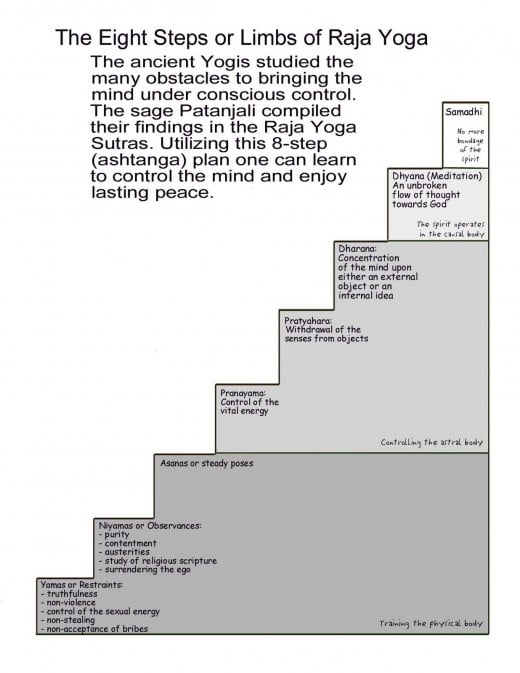
Raja Yoga
Raja Yoga covers the gamut of mental activity that we as human beings go through. This may be things such as high learning, stream of consciousness thinking, our personal prejudices and ideas, likes and dislikes. The statement, "As a man thinks, so he is" Proverbs 23:7. As espoused in the Proverbs and agreed in the Gospels concerning Jesus Christ, has a lot of meaning here. The chain of cause and effect in Karma Yoga has as its source, the goings on in the mind. Thoughts lead to words, leads to deeds and so our path is made. This linked series of events can lead to good or sin. Part of Raja Yoga therefore has to do with the control of ones own mind and the idea that the mind must take control of the other disciplines, such as doing Hatha yoga as opposed to "halfway" asana yoga or "no way" yoga. Raja yoga also has to do with lifelong learning, as there is truth to be found at every turn and in every subject of investigation. One other important idea has to do with perception versus reality. It is often stated that what is perceived by the mind is as real to it as reality itself. Perception might be totally false, so the mind needs to be watched and matched to the real truth. This can be tricky, and we need to see that the world as we see it is a mirror to our innermost thoughts and feelings. In a detached way, we can finally see the world for what it is instead of what we perceive it to be. The world can be a frightening place and people will react by perceiving things differently than what they really are, as a defensive mechanism. Thus one sees how escape by religion, drugs, booze, sex, and a host of other means arise, and brings with it suffering. The mind can trick itself into illusory patterns.
Raja Yoga also deals with learning in all its aspects and variation. We learn all though our lives. Much comes by experience and some by deliberate application of the interested inquirer. Raja yoga in its purest form is about learning to listen to ones own body and mind and building a discipline around that, which will transform the individual. A yogi thus should seek to learn about everything they encounter within and without.
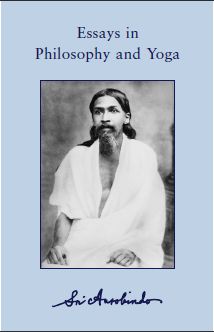
Vedanta Yoga
Vedanta Yoga concerns the philosophical. This one area has generated all the great philosophical speculations, religions and interpretation of science of which we are familiar past present and for the future. We all want to know the answer to the deep questions like, what is the purpose and meaning of life. Why do we exist and have consciousness? Why is there something rather than nothing? Philosophy addresses these issues whether by science, deep thinking or religion. The result of this is a vast body of sacred and secular writing from the Vedas to the daily newspaper.
We are all philosophers to a greater or lesser extent. We all debate just about anything one cares to examine on philosophical terms. There is a statement to the effect that "great minds discuss ideas, average ones discuss events and small minds other people. As for answers to the big questions, philosophers are still debating these.
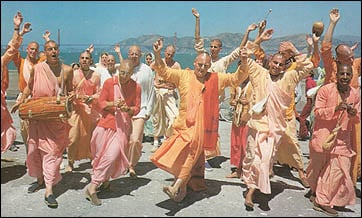
Bhakti Yoga
Bhakti Yoga is devotion to something beloved, usually God. But, Bhakti yoga can also be seen as devotion to others or even something like money. I want to start off by saying that Bhakti Yoga comes in two basic forms; that of necessity and that out of our Dharma. In the first case, necessity, Bhakti Yoga means that due to the existence of the stomach, we may be forced to do things that are unsavoury or undesirable in our wishes and contrary to our Dharma. Many people end up working jobs that they hate, simply because of the almost iron law of necessity. They do this because society is now structured in such a way that they require money in order to obtain the necessities of life. Thus devotion is expressed toward the goal of making money, even if it means you are doing something contrary to your wishes and that is non fulfilling. Some people are even forced at virtual or actual gunpoint to render devotion through slavery. This really runs against the grain of self fulfilling Dharma. This is so that others who exercise uncontrollable greed can render their devotion to increased profit at the expense of others. Using another as a slave is also major negative karma.
Bhakti Yoga has nine practices according to Swami Prabhupada, founder of ISKCON, the International Society of Krisna Consciousness. These practices are chanting the names of God/Krisna, sacrifice, prayer, devotion, service, meditation, study of the Vedas, Kirtan (dancing and singing for Krisna) and submission to the guru and Krisna. According to Swami Prabhupada, Bhakti is the highest form of yoga, which stands in contradistinction to Karma Yoga. Bhakti is a form of channelling Karma Yoga, so the question should answer itself, i.e., that actions speak louder than words. All the chanting and dancing you do will not hide evil actions. In order for Bhakti to mean anything, all nine facets must be practised.
Other details of how Bhakti yoga is practiced follow. That case is clearly laid out in the Bible and other sacred sources. Though I cannot speak too well in reference from other sources, I certainly can make a clear case from the Bible. Bhakti yoga also means treating the temple of God, your body with complete respect as far as proper feeding, asnana practice and meditation are concerned. So one must be devoted to Hatha Yoga, striving to do it on a daily basis. Bhakti yoga also means service toward others and the community as a whole. This must be done through your Dharma. However, I must make one point very clear. Service does not include supporting an evil structure or system that is engaged in harming other beings or the planet in various ways. That type of "service" is actually an anti-service. One should avoid as much as possible, rendering supportive devotion to such a system; but rather be critical and set a counter example in devotion to supporting those harmed by such evil. What do I mean by this? Simply one must not support the violence against innocent people whether that is by brutality or economic neglect. We have a responsibility to one another as thoroughly demonstrated by nature all around us. We ought to follow that example and protest all that runs contrary toward proper devotional support. Religions often make a case about proper devotion to God, but there can be no true love or respect for God whom we cannot see, if we do not display devotion and love toward our fellow beings and nature as a whole that we can see (1 John 4:20).
Devotion to our yoga practice, Dharma and to the real temple of the Almighty is another way to show this (1 Corinthians 6:19). For when we build our flexibility, strength, vitality and health, we are better able to render service to others and God. It is a matter to what one is devoted to, humanity, God and nature, or money. No one can do both simultaneously. You either serve and are devoted to God, humanity and nature, or devoted to money making to the real exclusion of all else (Matthew 6:24). To make a lot of wealth means that many others must do without entirely, which leads to a type of anti-devotional practice. These things have very real implications as far as Karma Yoga is concerned. Not the least of these is the building of common resentment against those who hoard wealth, which often leads to revolution. Revolution is an extremely serious business that results form a whole lot of negative Karma seeking rebalance. It would be good if revolution is founded on genuine spirituality, but failing that, the violent form will erupt periodically. History is the witness of this fact.
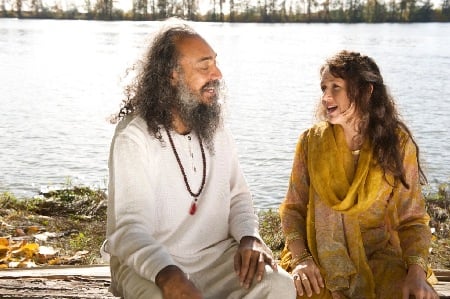
Mantra yoga
Mantra yoga deals with Mantra chanting and this can consist of fixed mantras tied with breath and rhythm or it can be something like a popular and good song reflecting matters of life. Whatever form it takes, the spoken word can have a powerful influence on the practitioner and the ones who are swayed by what is said. Although people have a view as to what Mantra Yoga is about, such as chanting "OM" for hours on end; I put it to you that slogans generated to win support for a cause are also a mantra. Slogans in gatherings such as "Hey, hey, ho, ho, APEC has got to go!" repeated over and over have the same effect as chanting "OM", "Lai Allah Il Allah", "Jaya Jaganathi" or "Hare Krisna" . Both can put people in a kind of trance and this can be effective in calming one in turbulent or troubled times. It is known that native tribes that were to engage in war would dance to the rhythmic beat of drums while chanting songs would calm them. This was to induce a state and condition of bravery in the face of possible imminent death or severe injury. When it comes down to it, any rhythmic chant will have the effect. One of the reasons is the tying in of breath or Pranayama, which alone can make a person feel great. When the mind is calmed and free of distraction other than the chant or mantra itself, it is receptive to what comes from meditation. Unfortunately, the thus opened mind is also receptive to suggestion from an outside "authority." Those who are in the know are aware of this fact and the unscrupulous exploit this to the hilt. Getting away from such influence for positive meditation is crucial. We have enough rulers and would be rulers waiting in the wings to determine our fate and destiny for us.
Mantras can be so designed that with repeated application, a bridge between mantra and altered state of mind is established. Thereafter, the mere stating of the mantra puts the mind instantly into a meditative and calm state. This is the positive side of chanting mantras. This does not end the use of mantras though. Mantras are also useful due to resonance.

Laya Yoga
Laya Yoga is Esoteric yoga and is perhaps the most secret of all. It is not for everyone; or at least so we are informed and I beg to differ. This yoga is by far, the vastest in knowledge, covering such a wide field that most people are almost completely in the dark. It covers such things as cosmology, cosmogony, astrology, the occult, science, medicine, the arts and so on. Much hidden information exists therein and much more remains hidden to those who know something and have more questions as a result.
There is a mood among some instructors, justified or not, to keep yoga from all but the most ardent seeker; so in these cases, yoga itself becomes esoteric. Regardless of that consideration, there is a "public consumption" yoga being promulgated for profit today, and then there is the more serious yoga, rooted in times when it was not popular as it enjoys today. Yoga for profit and set in a western competitive mood might spell its demise. But I'm confident enough and know of yoga's benefits not to be overly concerned.
The real esoteric side still exists as there are practices, ideas and knowledge still kept in secret. One of these is a branch of kundalini yoga called tantra. Of these, there are two schools; both relating to sexual control, one of denial and the other of enhancing sexual practice. One branch tends to negate sexuality, much like Christianity does but goes to the point of getting the aspirant to not practice sex, but to transmute that energy into other practices. The other side uses the sexual energy itself under the control of the yogi to reach states of bliss.
Let no one convince you. Sex is part of nature and life and is of itself not a sin. Sex is to life as gravity is to planetary systems. You cannot have ordered planetary systems without gravity and complex life would go extinct without sex. In our Judeo-Christian culture, sex has been relegated to a dirty practice at best and a heinous sin at worst. Our politic and law followed suite by making some sexual practices an indictable crime; and some still are, at least on the books. Here then is a topic that is understandably secret and esoteric, just for self preservation.

Jnana Yoga
Jnana Yoga is that which concerns Wisdom. There is a lot of ideas that are placed before us that attempts to pass as wisdom. It is one of those things that can mean different things to different people. There are certain criteria though that allows one to understand what is wise and what is merely pretence (2 Timothy 3:5). We can go so far to say that there are several types of wisdom. The main crux has to be that whatever promotes harmony and peace between all people by way of attitude and ready helpfulness is the wise path as opposed to the destructive and greedy path of war and division. Much of the foregoing contains elements of wisdom. There are of course other pieces as well that go to make up an entire repertoire of wisdom. No single religion or philosophy can claim to be the sum of wisdom.
Wisdom is better than weapons of war; but one evil doer destroys much good (Ecclesiastes 9:18). So the first point of wisdom then is to avoid doing harm and this avoidance takes all forms from a hasty word of attack in anger to physical assault. On the contrary, wisdom can be described as; "But the wisdom that is from above is first pure, then peaceable, gentle, and easy to be intreated, full of mercy and good fruits, without partiality, and without hypocrisy." (James 3:17) This description is very yogic. Let's make some of these terms a little clearer. Pureness has to do with the many faceted program of mental and physical yogic cleanliness. So it involves asana practice, diet, pranayama, tantra, meditation and devotion to this and others in a loving way. Peacefulness is, or should be self explanatory. Gentleness is something most of us can learn something about. It means the avoidance of angry outbursts, being kind to all, accepting of others without any form of prejudice and so forth. It can also mean being strong for someone where they need that strength. Also it allows one to graciously accept the supporting strength of another. It follows that these qualities are easily accepted by others. Wisdom shows mercy rather than sacrifice. (Matthew 9:13, 12:7) Good fruits as described in the passage have to do with how you treat others and yourself in a devotional way. Fruits of the spirit (spiritual) are best detailed in; "But the fruit of the Spirit is love, joy, peace, longsuffering, gentleness, goodness, faith, meekness, temperance: against such there is no law." (Galatians 5:22). The old adage to do unto others as you would have them do unto you holds here. (Matthew 7:12). Our being without partiality has to do with detachment and being non-prejudicial toward all others. When we say Namaste, this is the attitude that must be present within us, as well as respect. Everyone has their special Dharma and we have no business in judging what the cosmos manifests. (Luke 6:37). The cosmos has manifested all and it can be truly stated that which is necessary is and that which is, is necessary. There are many more mysteries that are unknown to us than that which we understand. It's one reason why we still make discoveries. Yet we manifest judgment of others going on at all times. This is a lesson that most of us still have to learn. One must be genuine and not phony.
Wisdom must also mean the understanding human nature and what each of us is capable in our darkest thoughts and deeds. Given the right circumstances, almost all of us will collapse into doing something evil and harmful. Actual psychological studies have proven that most people can be pressured into doing terrible things by peer pressure or in a command and obey setting, especially when threatened with harm against themselves for non compliance. We all want to be accepted by our peers, especially the ones that mean the most to us. Sometimes we are asked to do reprehensible acts by them and most people will follow through, though they may not like what they think they are required to do. These acts may be things like violently attacking a targeted individual due to them being demonized for one reason or another. It might have to do with stealing or destructive activity of one kind or another. In a war setting, you might be asked to commit torture or some other heinous act. The list is endless. Then there is our own innate wish for vengeance as a result of some wrong done to us, imagined or real. To avoid this, one must be strong within themselves, able to resist the pressures of others, no matter what results. History is also full of what happens to conscientious objectors. They may be jailed, ostracized or tortured and shot. Those in power like to set examples to force the rest of us to comply. In order not to face our own evil, we may seek escape in a bottle, a needle or "just bury our heads in the sand." Sometimes we are misled into believing that something is evil when it is not. Then we act out against this evil to our own detriment. This whole area is fraught with karma yoga, so these two yogas can be tightly bound together. We obviously need the wisdom to do the right thing. There is also the reality that enough good people doing nothing, allows evil to rule the day. When we see evil being done, we need to speak up for the victim; and by implication our selves in the process. Whether you believe that an injury to one is and injury to all, or the idea that we are all interconnected and responsible for one other, we need to act against tyranny, injustice and terror. This does not mean becoming violent, for that only perpetrates the same mind set and gets nowhere. We need to spread the revolution of spirit and love so that all are in this condition. The rest will follow out of devotion and responsibility toward those we love.
Wisdom also means setting an example of holiness for others to emulate. Notice that the word follow was not used, for in the eyes of the manifest cosmos, all are equal, but different. We should set and emulate a righteous and good example. We all have our strengths that can interplay with one another to build a strong overall community. A good example of such an act was M. K. Gandhi, who managed to free India from the imperialist rule of the British without relying on the traditional use of warfare. His strategy was peaceful protests, simplifying and fasting. Unfortunately, he did not resolve the dispute between the Muslims and the Hindus. Two countries were carved out of larger India to keep the two religions from total war. There has been a stand off that threatens war ever since. This was not Gandhi's fault so much as the fault and limitations of the two populations. There have been other examples of holiness in recent history as well, but so far, with little change for the better in the general population.
Wisdom also means not tying ones self up with illusory or transitory things. Everything changes. In civilization, almost everything we come in contact with is caught up in illusion. Most of us who are thus alienated from nature are caught up in illusion, which if removed, can even cost our lives. Civilization is a fragile thing. It is alluring, captivating us in its web of intrigue and excitement. We forget the former ways of life where we were more in tune with nature and had a clear vision of where our support came from. We no longer know for the most part what we can rely on as food in the wild, how to hunt it down and prepare it with only the simplest of tools. Further, we don't know how to make our own clothes, homes and medicine. All of this has been lost to the specialized tasks we have learned in the process of being civilized. We are all in a dangerous position, caught up in the thrall of civilized illusion. There is a way out and that is training to live directly in contact with nature in all its means of expression.
Then there is the illusion of what we think we are and all the fantastic things we believe without challenge, accepting on faith things we have no way of proving. A lot of what we accept as truth is illusory. Much of what we believe cannot be proven directly. We end up confused because thing we believe often do not jive with reality. We also make images of what we would like another person to be for us, but this is not the real other and so we end up in disappointment when the real person fails to live up to our script. This is something that is almost certainly to be true in every case. It is a problem that is seen most frequently in parent child relationships. The end result is usually alienation of both toward each other. This situation also occurs in our dealings with day to day circumstance. We have the ideal agenda or program and then life dishes out the real, and again this brings disappointment. The roads are filled with road rage due to the convenience of the car caught in grid-lock and preventing the fulfillment of agendas and expectations. Employers are disappointed with employees because they are not perfect according to some model in their mind. And so it goes, illusion after illusion. Some people abhor change, yet change is the one certain thing we can rely on; and that change is all too often, not in ways we expect. This contradiction is so difficult for some, they can go insane, lose themselves in addictions, or just ignore the obvious; they "bury their head in the sand".
Nature is what is given and what we can truly see if we are not superimposing our own ideas and expectations thereon. We must accept this nature at all levels, for we certainly have very limited control over it. As a consequence, we must be tolerant of others, just as nature presents them moment by moment. We must resign ourselves to what God hath wrought. Incapable of changing most things in and around us, we must learn divine acceptance. If we learn that one universally, it will go a long way to healing collective ills.
Meditating on these questions and comparing them with reality, we can go a long way to clearing out all the useless internal rubbish of confused thinking and the emotions tied up with that. We live in a world where many are attempting to win over the people with all kinds of mind control tactics and ideas based on false premises. The question is so serious, that whole peoples have been put to genocide over religious differences alone. One of the main things we need to learn is complete detachment form all transitory phenomena and unproven concepts. The more one tries to grasp onto a changing phenomena, the more it slips away to one's disappointment. If we can accept change for what it is and understand things for what they are, then no disappointment can arise.
We follow the forgoing with the idea of facing reality face on, complete with its beauty and horrors. It is extremely difficult for most people to take control of themselves let alone the rest of nature. We cannot stop our own aging and death. We have little to say on the matter of breathing beyond yogic breath control. We must eat, drink and eliminate. Such is fate within our own bodies. When it comes to the larger question of the external cosmos, we are almost entirely subject to forces completely beyond our control. We cannot stop the flood, the drought, the cold and heat. We cannot alter the course of the moon in the sky and thus are unable to redirect the results of the moon's forces that raise the tides and our own circadian rhythm. Nature can be fascinating in its beauty, delicacy and grace and yet be terrifying when a tornado, tsunami or earthquake is unleashed. For the solar system as a whole, there are forces at work that release aperiodic Biblical catastrophes upon humanity. We can do absolutely nothing about these things even now with our rocket science. We stand in the way of major impacts from asteroids and comets. Historically, people have had a dread over comets for good reason.
There must be balance and moderation in all things. Knowing yourself is something that we all need to do despite what some of religious persuasion might say to the contrary. The various limbs of yoga and meditation will allow you to get to know yourself.
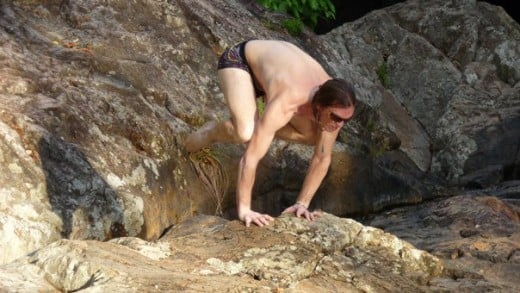
Hatha Yoga
Many people today lead very busy lives and think they have no time for physical and spiritual culture of any kind. They are too busy chasing the dollar, taking care of family, pursuing their wishes and desires or whatever. I know a yogi who has a family and busy schedule, yet he has time for the discipline. So do I! I put in many 16 hour days, but still have time for yoga, which I find very beneficial. Lack of a centered approach to life has led to people becoming tense, out of shape and unhealthy. Contrary to what people might think, you don't need to jog for hours or work on weights to lose that fat and build a healthy body. This can be done by taking up yoga as a discipline and life style in all its facets. Yoga includes not only the positions, but also one's attitude, diet, thinking, life style, meditation, etc. It is all encompassing. It is a life style. No one can say that they are too busy for yoga. You can take yoga with you wherever you go. Yoga can be adapted to fit tight schedules, times where there is a "breathing space" and where there is enough space to execute some yoga positions. It can be done while walking or sitting in the work place, outside, in the home or wherever you find yourself. Even lying on the beach is an opportunity. I've even done a little yoga in the midst of a church service. The only watchword here perhaps is discretion. Even a partial array of positions has the ability to re-energize you, so don't think you have to do every single position in one session. Yoga can be done in "chunks" throughout the day or night, depending on your times of work.
This work is intended for those who already have some familiarity with yoga and are familiar with at least the basic poses. If you are new to yoga, it is highly recommended that you seek out and learn from a qualified instructor like Yogi B. J. Colwell or others who you might be familiar with. Today, qualified yoga instructors abound and are easy to find, not like in the days when I started the yoga practice. Yoga must not be forced, but taken to the edge of your flexibility and gently. One must be gentle, gradually extending the range of flexibility and length of time holding a pose. There are also many good reference books, but do seek out an instructor who knows the discipline from rigorous practice. That person can help your refine your own practice to a high degree of excellence.
Yoga comprises more than just striking a pose or voguing as one song put it. There is a spiritual philosophy behind yoga as well that is highly beneficial. It is urged that you study the works of yogis like Patanjali and other gurus. Yoga philosophy is a beautiful approach to life, that, if practices by the majority of people, would lead to a far better world than what exists currently. Hatha Yoga in practice is dialectical, using a series of poses and counter poses as a thesis and antithesis that results in a synthesis of a more flexible, strong and vital body and mind. There are many resource books and web sites available covering various forms of yoga and the philosophy.
Unless you have tried it for yourself, you won't know how rejuvenating, invigorating and energizing the practice can be. If ever there was a fountain of youth, this is it! It is not found in some outside setting, or from some magic elixir, but within you. The best that anyone can do, is inspire another to take up the discipline. The actual taking up of the life style is a personal decision and requires commitment and sweat. The old saying 1 percent inspiration and 99 percent perspiration holds here. One does not get results by mere fantasy and day dreaming. One must practice.
Finally, yoga is about self-observation. The scientific method can be of great benefit here. Keeping a journal of daily experiences can go a long way to helping your progress. You should note, the positions executed, how long you held them by breath count, what breakthroughs were made, improvements/refinements to technique or falling back, new poses you tried for the first time and comments on the session. Comments can include things you've found that help you execute a pose, the temperature and weather of the day and how you felt at the start and end of a session. Gathering statistics will help you and eventually others in maintaining a rigorous and beneficial practice. As a help you might post an asana chart to help you remember poses in a yoga flow sequence. Of all the yoga schools of thought, Ashtanga yoga maps a series of 26 essential poses executed in a fixed sequence that targets every part of the body. The session lasts for 90 minutes and may be performed in a hot room or some place only a little cooler than body temperature. You might find this approach useful if you can't remember what you've done and not done. This is especially true if you know a lot of different poses and variations thereof like myself. Even I am far from performing the recognized 902 different classic asanas that are performed by various yogis. Some yogis say that there are 8,000 positions. Will Raymond, B. J. Colwell and myself agree that anything you do with concentration and self observation is yoga. In short, life is yoga. To get the most out of it, life/yoga one must be obsessive, concentrated and observant. Nothing great is achieved from a lack-luster or cavalier attitude. We as individuals are on Earth but a short time. Yoga definitely helps one to make the utmost of it. It is known that most animals age gracefully; i.e., they maintain vigor right up to the moment of death. People on the other hand tend to gradually sink into increasing weakness and decrepitude. This need not be so. Yoga can give you the animal kind of vitality right up to your last moment on Earth.
First of all, you should have an enthusiastic attitude. This will go far to keep you going. Once your realize and experience the benefits of asana practice, this will assist you in keeping up the practice. Further, positive changes that you see in your body will act as a further incentive. Yoga is not about competing with anyone but yourself in the goal to constantly better your performance.
Other needs are the proper knowledge of how to breathe and accurately execute various asnans (positions). A knowledgeable spotter or instructor can be of great help. You might want a sweat band, a bottle for water, a comfortable block for assisting in the beginning, a towel and a yoga mat or rug of some kind if needed and circumstances allow. Above all, wear loose clothes when possible. Whenever I can, I perform yoga in the nude for maximum flexibility. Otherwise, I chose loose fitting cloths that allow for maximum movement, but not so loose as to impede free movement. In a hot yoga environment, you'll want clothes that wick away sweat. Men in this environment usually wear only shorts or firm fitting spandex bicycle type trunks and women will wear in addition, some type of halter top. A sweat-band is essential as you don't want sweat continually running into your eyes.
Some people like to have a posing mirror to check on whether or not they are executing a pose correctly. Mirrors can be distracting though, and impractical when you are in a face down pose like the downward facing dog. Further, facing sideways to look in a mirror when you should be looking ahead might be enough to tip you off balance. A suggestion to aid balance is to have something close by and steady on which to affix your gaze. Do not attempt to balance by focusing on something moving. You are guaranteed to lose your balance if you do so. The same is true if you shift your gaze from location to location. A proximal fixing point is better than a distant one because you will see minor movements of your body much better and will be able to compensate faster as a result.


